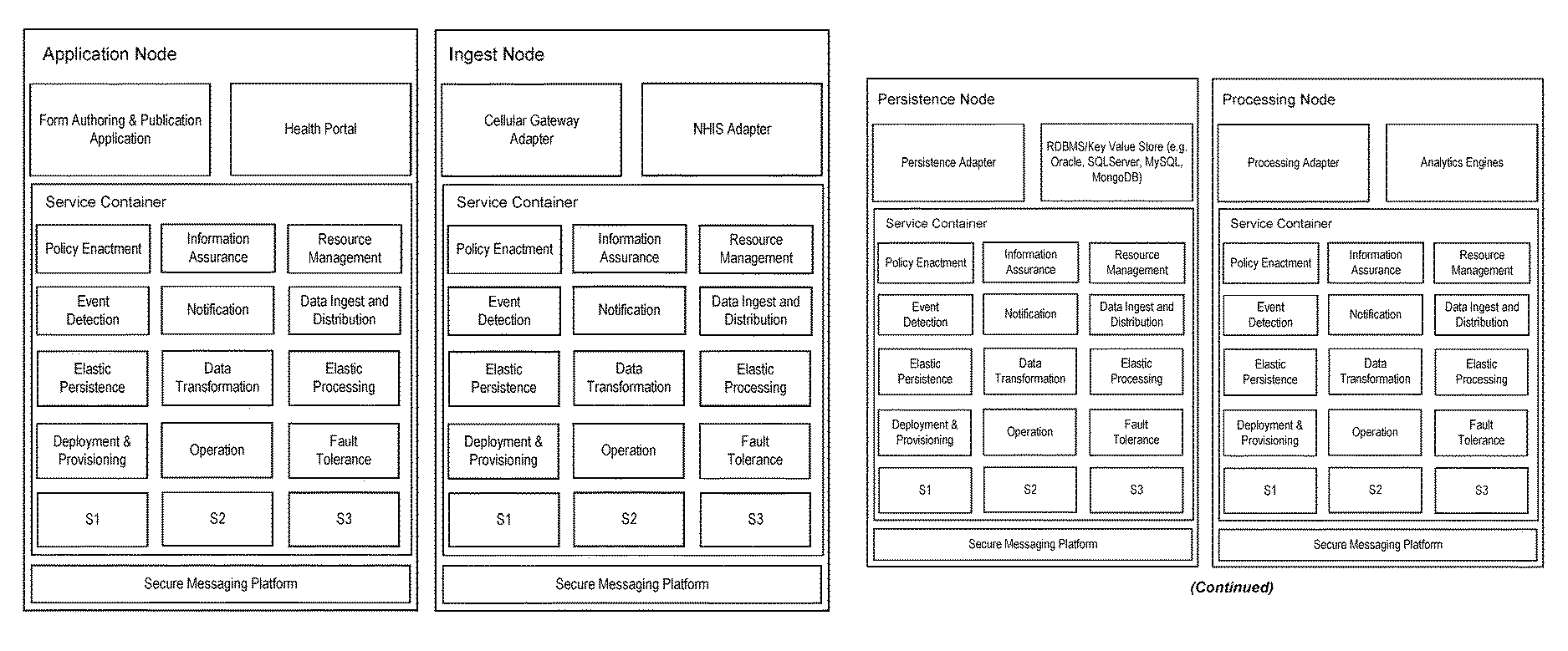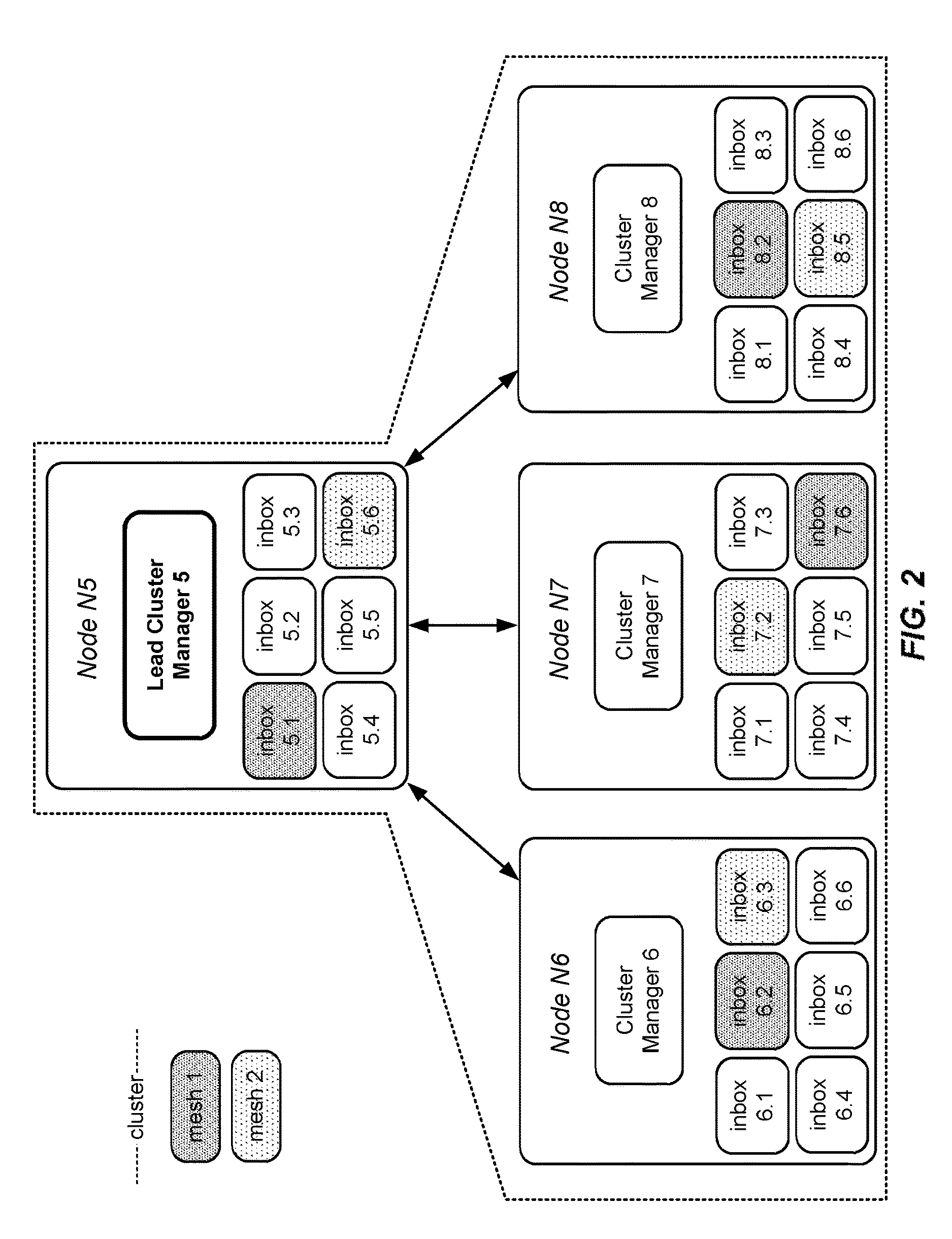Federated, policy-driven service meshes for distributed software systems
a distributed software and policy-driven technology, applied in the field of distributed software systems, can solve the problems of affecting the deployment of distributed software applications on cloud-infrastructure providers today, affecting and sometimes experiencing outages of entire infrastructure segments, so as to achieve the effect of increasing the availability of distributed software applications
- Summary
- Abstract
- Description
- Claims
- Application Information
AI Technical Summary
Benefits of technology
Problems solved by technology
Method used
Image
Examples
example 1
Service Container
[0114]One exemplary use of the concepts introduced in the invention concerns the creation of a service container, i.e., an environment in which a multitude of business-specific services (implementing business processes or workflows) are paired with cross-cutting services (infrastructure services) that are interjected into the message exchanges among the business services. The service container provides a prefabricated environment for the composition and encapsulation of business services under the governance of policies on authorization, authentication, and corresponding policies for failover and security.
[0115]Service containers are implemented as clusters, with separate meshes for the interface to the environment of the service container (service-container mesh), the infrastructure services, and the business services. Each of these mesh categories can, in fact, be implemented via multiple separate meshes, depending on the desired concrete combinations of policies ...
example 2
Health Information System
[0120]Another exemplary use of the concepts introduced in the invention demonstrates the use of the Service Container of Example 1 and the plain federated service mesh to address challenging user and system requirements in health-care systems engineering. One such system is a mobile health platform (MHP); in short, the system integrates mobile devices (from simple cellular phones with SMS capability, to smart phones, to tablet computers) into a sophisticated cloud-based computing, data and networking system that allows for (semi-) automated fusion and analysis of patient information, enabling more consistent, faster, cost-effective and targeted healthcare—even in environments where desktops or laptops are impractical (e.g., a battlefield or remote area in a developing country with little to no IT services at the point of care).
[0121]The system is designed as Service-Oriented Architecture (SOA). SOAs use standards-based infrastructure to forge flexible, large...
PUM
 Login to View More
Login to View More Abstract
Description
Claims
Application Information
 Login to View More
Login to View More - R&D
- Intellectual Property
- Life Sciences
- Materials
- Tech Scout
- Unparalleled Data Quality
- Higher Quality Content
- 60% Fewer Hallucinations
Browse by: Latest US Patents, China's latest patents, Technical Efficacy Thesaurus, Application Domain, Technology Topic, Popular Technical Reports.
© 2025 PatSnap. All rights reserved.Legal|Privacy policy|Modern Slavery Act Transparency Statement|Sitemap|About US| Contact US: help@patsnap.com



